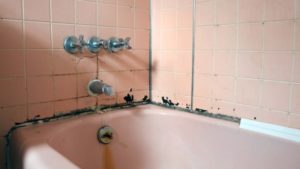Common Holiday Hazards to Avoid
 The holidays can feel like a period of perpetual motion. And while that’s much of what makes the season such a joy, it’s also why it’s important to guard against mishaps that commonly crop up during the hustle. Here are a few key holiday safety tips to keep in mind:
The holidays can feel like a period of perpetual motion. And while that’s much of what makes the season such a joy, it’s also why it’s important to guard against mishaps that commonly crop up during the hustle. Here are a few key holiday safety tips to keep in mind:
Don’t fall while decorating. Do you go all out, like Clark Griswold, when stringing lights? Each season, nearly 6,000 people visit emergency rooms after falling while hanging holiday decor. (More than half of those falls occurred outdoors from roofs or ladders.) Unwieldy extension cords can also trip up individuals and lead to injuries.
Keep clear of flames. Home fires spike around the holiday season, with candles, Christmas trees and cooking fires being common culprits. Keep decorations away from heat sources, don’t leave burning candles unattended, check that electrical cords are in good condition and stay in the kitchen while cooking.
Identify and remove toxins. Plants can add a festive touch to your home, but some seasonal favorites can also pose a threat to children and pets. The leaves and berries of mistletoe, for instance, are toxic if eaten, and poinsettias can irritate skin. If you choose to decorate with these plants, keep them safely out of reach and promptly clean up fallen berries and leaves.
Travel safely. During the holiday season, vehicles riddle the roadways, so safety is a big concern. Take your car in for winter maintenance, check the weather forecast before road trips, stash a well-stocked emergency kit in the trunk, and keep shopping bags out of sight to avoid break-ins.
Use these and other safety tips to keep you and your loved ones happy and healthy through the holiday season.
Shared from Matthew Isadore / Midwest Community Bank
Contact Linda
Swanson Real Estate
503 E. Church St.
Sandwich, IL 60548
815.742.8161 Direct
815.786.9418 Office
Search Listings
Areas Served: Big Rock, Hinckley, Marseilles, Naperville, Newark, Oswego, Plano, Sandwich, Sheridan, Somonauk , Sugar Grove, Yorkville

